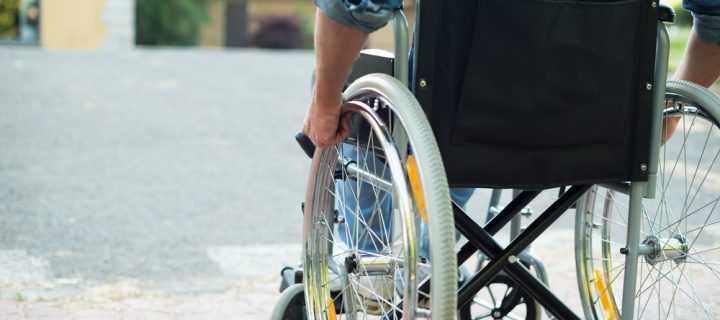A recent report on bbc.com is telling of what seems to be a miracle: a paralyzed man who is now able to successfully ride a bicycle.
Darek Fidyka suffered a stab wound in the middle of his back years ago, leaving him paralyzed and without sensation from the spot of his injury on down his body.
Fidyka’s spinal cord was all but completely severed- it has one thin thread of external connective tissue still in tact-leaving him confined to a wheel chair for, what seemed to be, the rest of his living days.
That is, until he connected with the researchers in Poland and Britain, who have been working on a cure for paralysis.
www.youtube.com
After having a transplant as part of groundbreaking paralysis surgery back in April of 2012, Fidyka is now able to walk slowly using crutches or a small walking frame, and to ride an adult tricycle.
He has also had the return of sensation below his injury, bringing back the benefits of bladder control and sexual function, something that most paralysis victims can hardly dream of.
Fidyka has experienced these phenomenal milestones in recovery because he has been part of pioneering surgery that is being done doctors partnering between Poland and Britain, which uses a patient’s own cells to regenerate the spinal cord. And he is only the first-doctors have just set about recruiting more patients worldwide for assessment in Poland, in order to prove that the surgery works and is a cure for paralysis.
What does it entail? The process takes two surgeries to complete, and years of extremely determined rehabilitation. It uses specialist cells from the area of the body involved with smell-from an olfactory bulb-and injects these cells above and below the gap that was made in the injured spinal cord.
Researchers believe that the special cells can help the nerve fibers of the spinal cord regenerate across the gap.
If successful in multiple patients-as stated, Fidyka is the first, and it’s looking good- the surgery will be viewed as a cure for paralysis and something that can reconnect the brain with the legs, reactivating movement and sensation.
In order to conduct the trailblazing surgery on more patients, to measure it’s success rate, scientists have developed something called the Wroclaw Walk Again Project .
Patients around the world aged 16-65 can apply via this website.
All treatment will be free, and to be eligible patients must have no feeling or voluntary muscle function below the injury. They must also be prepared to spend around three years in Poland.
What might the future look like for those who participate? Currently, around four years after his surgery, Fidyka spends five hours a day participating in physiotherapy, as part of his ongoing rehabilitation.
Often times he still relies on his wheelchair to get around as it’s less tiring than assisted walking and faster.
But it’s amazing that he can self-propel at all, and he continues to improve.
The medical team involved is currently making a shortlist of possible participants and will invite a few potential volunteers to be assessed in Poland, based on medical records.
Those selected will undergo the same pioneering surgery that was performed on Darek Fidyka which was published in Cell Transplantation.
The medical team involved has stressed that the road to success will not be easy and participants will have to show stupendous determination in order to see the benefits of the treatment.
But as Peter Ellaway, emeritus professor of physiology, at Imperial said to the bbc, the future looks very bright: “I’m excited because this is a novel treatment with a lot of promise.”
For a more detailed analysis and report, please click here to visit bbc.com.
Photo credit: Minerva Studio/Shutterstock











